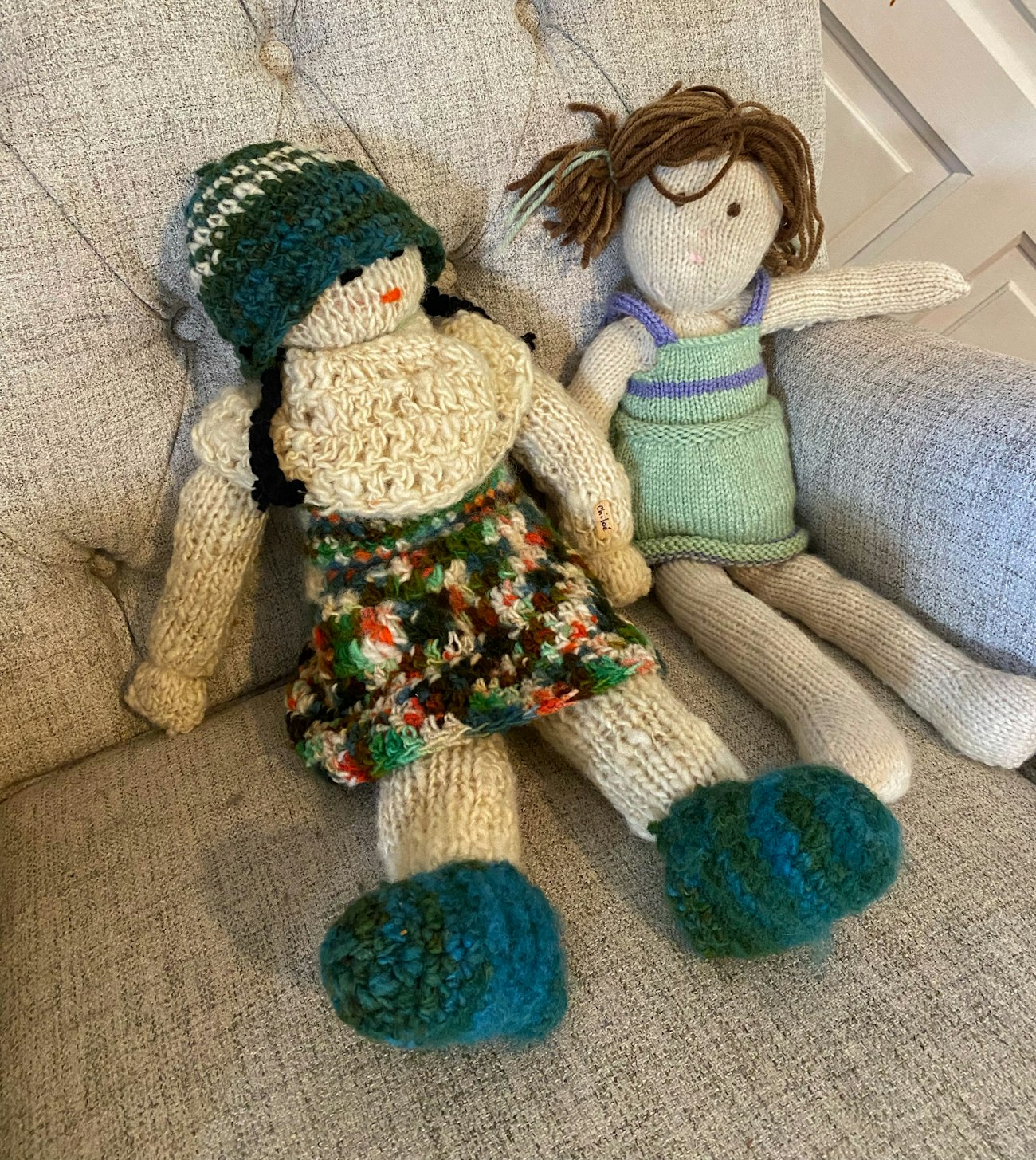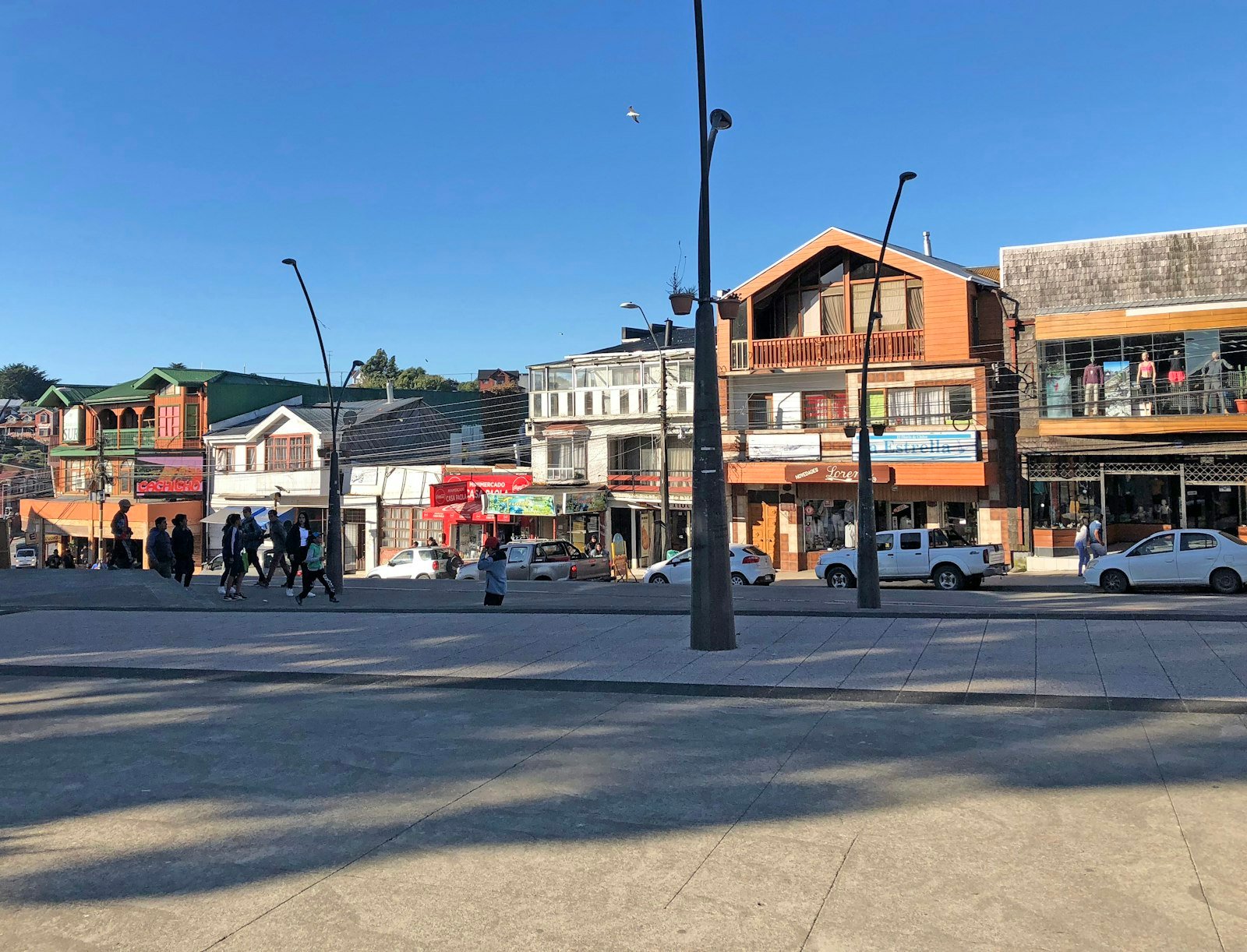As a kid, I hated when my mom left for business trips across the country and around the world. To ease the transition and give me something extra special to look forward to, Mom brought home a doll from her host country, which I carefully placed on shelves in my bedroom. Before I did much traveling myself, these dolls acted as gateways to women’s lives far from my own.
In my late twenties, more than a decade after I grew up and this tradition had long faded, my mother returned from a trip to Chile, once more bringing a doll home for me!
My Chilean knit doll sits in my living room thousands of miles from where my parents purchased her from a shop on the island of Chiloé. Covering more than 3,000 square miles, the island has been inhabited for more than 7,000 years, isolated enough to develop its own unique history and traditions, including woolen handicrafts from hand-spun yarn.
The Main Square
The shop sat just off the main square of Ancud, a town known for gloriously bright buildings of reds, greens, purples, and equally eye-catching fishing boats, as well as a raucous penguin colony nearby. Dolls sat outside the shop, ushering visitors inside to look at more wares, including yarn, ornaments, and of course, more dolls. Woolen clothes–including shoes–are especially important here, where winters are cold and even summer brings damp, misty weather.

Dolls outside of shop. Photo by Lindsey Rustad.
Wool is woven into the fabric of life in Chile. People wove thousands of years before Europeans arrived, and today Chile exports more than 24 million pounds of wool. Knitting came later, but remains a critical craft for both women and men making goods for themselves as well as for sale in artisan markets or shops.

Erika's doll sits on the left next to the beautiful handspun yarn. Photo by Lindsey Rustad.
My particular Chiloé knit doll stands about two feet tall, with a multi-hued crocheted dress, a beige crocheted shawl, and a green crocheted bucket hat. On her arm a simple sticker has been planted, “Chiloé” written in black pen. The dolls all have two thick braids to complete the look. My favorite part? The yarn is hand-spun and kept as single-ply (the same way my own spun yarn usually remains). The fiber artist used stockinette stitch to create the arms, legs, and face. All the dolls sold in Ancud have the same general proportions, united in their long legs and arms and very round heads but differentiated by a wide range of color combinations.
Back in my living room, the Chilean doll sits next to a doll I knit from a pattern published in the United States. While the doll I made represents my home and hometown, the Chilean version reminds me of all the places I still hope to travel, including to the stunning ocean views and exciting seabirds of Ancud.

The two dolls side by side, photo by Erika Zambello
Erika Zambello is a writer and communications specialist living in Florida. She is a fan of knitting on the move, especially during walks, hikes, and kayak trips. You can follow her fibercraft explorations at @knittingzdaily on Instagram.

